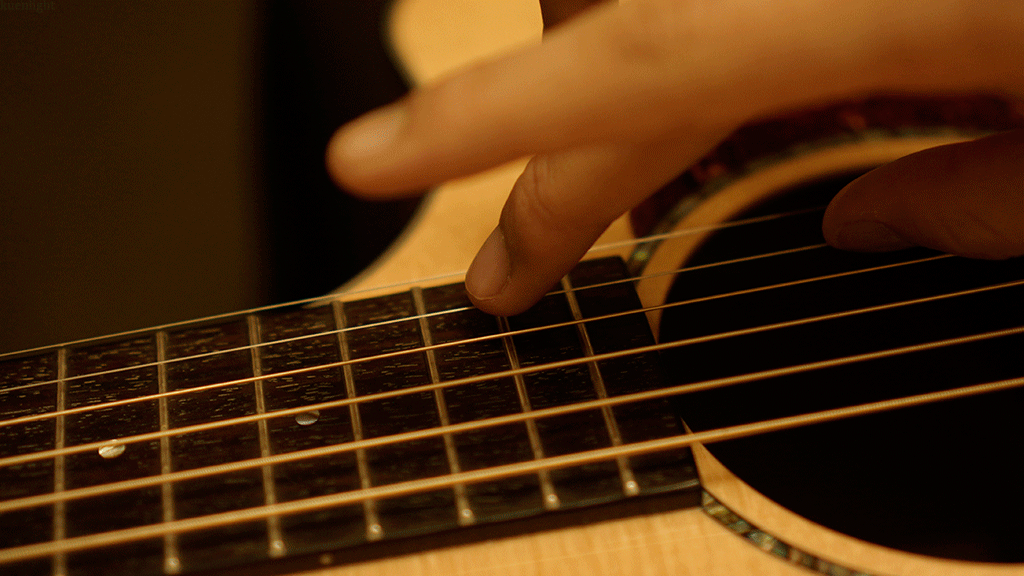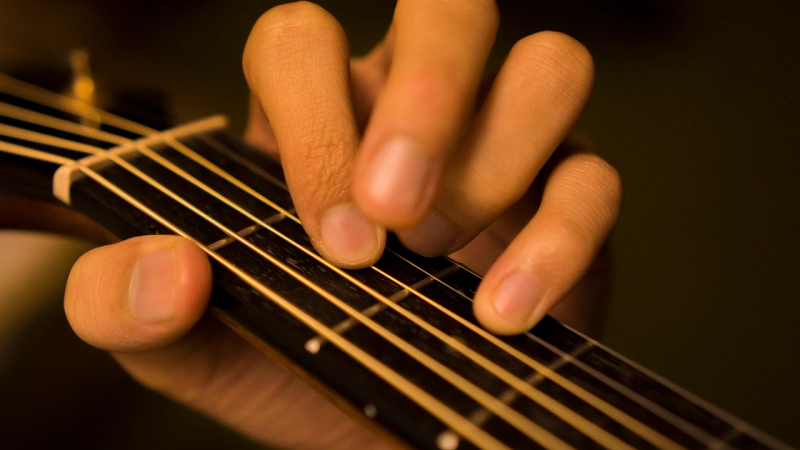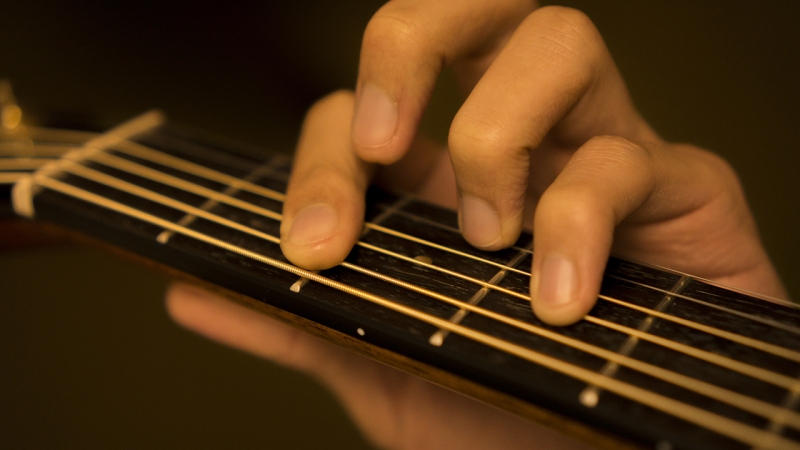This song is no.9 on the EGOIST album Extra Terrestrial Biological Entities and is an acoustic vocal/guitar track. The song is played at a moderate tempo, so it sounds like it isn’t particularly difficult to play. I’ve made a guitar tablature sheet, which you can find here in .pdf, and in .png [–1–2–] formats. This song reminds me of Yakusoku wo Shiyou, which is slower and more melodic. If you know how to play that, this will be a tiny bit easier to learn. It’s in the same key and shares a few other similarities which I won’t go into, but I thought it was interesting.
Anyway, there are some things about the symbols on the sheet which you should keep in mind, and I’ll list them here:
- Minims are notated in the same way as crotchets
- Slurs = a tied note, a hammer-on, or pull-off
- H = Hammer-on
- P = Pull-off
- / = Slide
- Squiggly downwards facing arrow = upstroke (strum towards yourself)
And because I don’t know how to do the notation for these properly:
- Diamond box = harmonic
- A.H. = artificial harmonic (different from an open harmonic because you have to fret the string with your left hand)
Now, this post is a bit longer than previous posts, because there are a few things I’d like to talk about in regards to playing the song, if you want to know.
First things first, if you know how to play harmonics, great! If you don’t, I can’t help you out much, but I’ll give you a vague idea. Look up some YouTube videos, read the Wikipedia article, and do some of your own experimenting! As an example, if you pluck the top E string with your thumb at the sound hole, it sounds pretty normal. If you pluck it near the 12th fret, the sound changes. because the resonance of overtones changes. Now if you touch the 12th fret and pluck it at the same time, you can make a 1st degree harmonic! Note that you’ll have to lightly touch the string just above the metal fret, not above the wood (this gives you a clearer, more focused sound). Timing is crucial, and your aim is to lift the finger touching the 12th fret just a split second after you pluck. The gif below shows a common technique, using the middle (probably more people use the index) finger to touch the string at the harmonic, while using the thumb underneath to pluck the string. It takes practise!

So what are the harmonics you need to learn?
The 1st degree harmonics sound one octave above the fundamental tone, e.g. a 1st degree harmonic on an E4 string will sound like E5. It is both the easiest to play, and probably the most useful. This is played at the 12th fret. If you divided the string into two equal parts, it would be at the centre point between the two. The 2nd degree harmonic is an octave+fifth above the fundamental tone, e.g. E4 will sound like B5. You can play this at the 7th or 19th fret. They’d be at the endpoints of each section if you divided the string into thirds. There are more, but those are all we need for today.
Artificial harmonics are played at the beginning of the piece, but nowhere else. I notated these with rounded square brackets underneath the staff, because I don’t know how to actually notate it. These are all first degree harmonics of the G, B and E strings when played in a standard D chord [xx0232]. This means instead of playing harmonics of the G, B and E strings at the 12th fret like you would if they were open, you have to play them at the 14th, 15th and 14th frets, respectively. There are other ways to play the same notes using open 2nd degree harmonics of the D, G and B strings, and this TAB does use them in some parts, but not all. What this means is that you don’t have to use artificial harmonics at all, if you don’t want to, and you can use the 5th fret of the A string (for the left hand) instead of the open D for the first verse. The reason I didn’t tab it this way is because you’ll have to do it the way I tabbed it later anyway, and it’s good practise.
Tips for fingering
All right, now onto the next thing I wanted to talk about. When learning the song, I found that the form is fairly simple (extended binary: A-B-A-B-coda pattern), and the notes aren’t that hard to figure out. The problem was with the fingering.
See, normally you play a D chord by using your index, middle and ring finger to make the shape. But in this piece you have to use a few different fingerings for the same D chord. At the introduction, you can use the normal fingering, but you have to change it quite quickly at the 3rd bar to your middle, ring and pinky (see the picture above) if you want to be able to sustain the bottom note with your index. After this you have to shift to the A string 4th fret, and fretting the G string 2nd fret with the index and B string 3rd fret with the middle finger. This leaves your pinky free to fret the G string 4th fret afterwards.
The verse (or A section) requires the use of either that odd index/middle-ring-pinky fingering of the D chord, which lets you play the bottom note with the finger that’s free (your index or your middle, depending on which one you used to fret the G string. I chose to keep my middle finger free because it was easier for me). There is an alternate choice to this odd fingering, and that is to play the chord using the barred D chord as the base [557775], instead of the open D. This way is probably easier, but you’ll need lower tension strings, or a very strong grip, or both.
In the chorus, (or B section) the first chord is a B minor 7th [x2423x]. Normally this is played with the same fingering as a normal B minor chord, but without the pinky. That means that normally you’ve got your index barring the 2nd fret, your middle finger on the B string 3rd fret, and your ring finger on the D string 4th fret. In the case of this song, the fingering done so your ring finger is where your middle finger normally is, and your pinky is where your ring finger normally is (see the image below). This leaves the middle finger free to move to the next part of the chorus smoothly.
Okay, so that’s about all I wanted to talk about. If you have any issues with parts in the song, let me know and I might be able to help. Hopefully all the writing has been useful to your learning. I’ll catch you next time.

